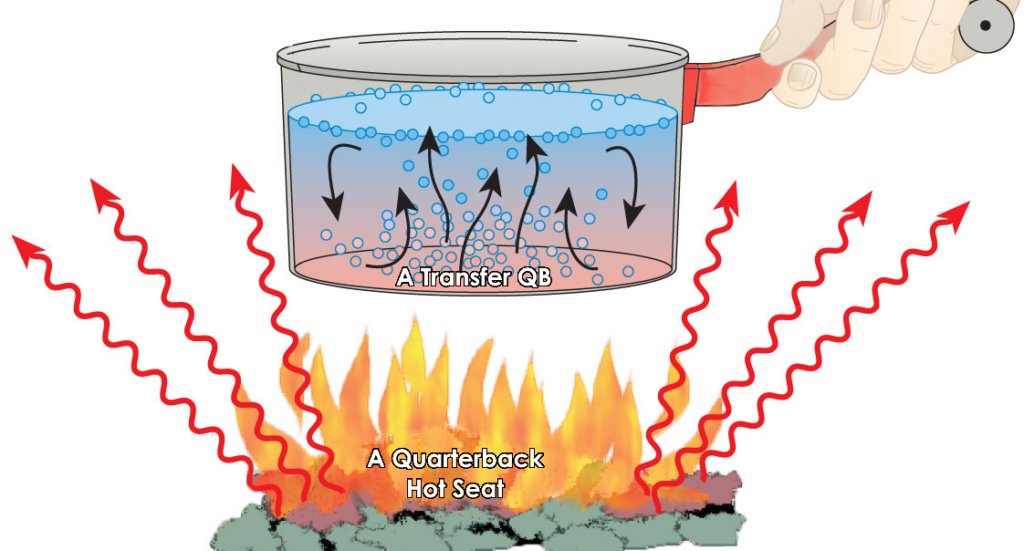Early in Skip Holtz’s tenure at Louisiana Tech, we saw a pretty consistent pattern of how the QB unit would be assembled. Holtz would bring in a transfer that could immediately compete for (and often win) the starting role.
This philosophy started in the very first year of the Holtz regime, as Texas Tech transfer Scotty Young competed against redshirt freshman Ryan Higgins for the starting QB spot. Granted, Young was already on the roster when Holtz took over from Sonny Dykes, but Skip must have fallen in love with the idea of transfer quarterbacks.
This was new for Holtz, however, because before arriving at Tech, he had never started a transfer QB.
But this was a new-and-improved Skipper. Following the 2013 season (you know, that season we don’t talk about), ex-Iowa Hawkeye Cody Sokol found a home in Ruston, leading the Bulldogs to their first bowl win since 2008. Then Jeff Driskel transferred in the year after, continuing the streak. Ole Skip seemed to find the secret of college football success: steal other people’s quarterbacks.
But after Driskel’s 2015 season, Tech has yet to bring in another transfer quarterback. Ryan Higgins (version 2.0) proved that a QB doesn’t need to be a transfer to succeed at Holtz’s Tech. But J’Mar Smith’s un-spectacular performance has left many wondering why Tech won’t go back to the tried and true method of bringing in a transfer quarterback.
So that’s what we’re going to look at today or whatever day you’re reading this: why doesn’t Holtz bring in a new transfer QB?
The first thing we need to establish is how difficult it is to bring in a grad transfer QB
I was able to find 30 different QBs that completed a graduate transfer going into the 2018 season. Meanwhile, I could only find seven in the 2017 season.
That’s a quite a few options, but as we’ve established in previous posts, Tech isn’t exactly at the top of the college football pecking order.
So let’s see a breakdown of where these transfer QBs ended up:

Good news, more graduate QBs transfer to G5 schools than P5 schools. That doesn’t mean Tech would have its choice of all 24 G5 grad-transfers, but the odds are pretty decent that Tech would have a shot at a couple.
But just how good are these G5 grad-transfers? Maybe some of these players changed schools because they weren’t good enough to play at a school of Tech’s caliber.
The easiest thing to look at is if the transfer started at their new school:

Surprisingly, over half of the G5 grad-transfers rode the bench at their new destination. These players switched schools for a shot at a starting role, and over half of them failed.
So here’s where we are: about 65% of all QB grad-transfers go to a G5 school. Of that group, only 46% are good enough to win a starting job. So of the original pool of grad-transfers, only 30% are both start-able and possibly get-able for Tech.
It’s not like we always know which QBs will pan out. There’s a long history of highly touted grad-transfers sizzling out and not living up to the hype.
However, we don’t have to look too far to see the other side of the coin. Cody Sokol and Jeff Driskel both showed us how good grad-transfers can be.
But let’s see how the duo compares to the grad-transfers in more recent years:

There were only eleven G5 grad-transfers in the past two years that started at their new school. Only three had a better QB rating than Cody Sokol. And only one (FIU’s James Morgan) had a better rating than Jeff Driskel.
So let’s say Tech was able to land a grad-transfer. According to the data from the past couple years, there’s only about a 4% chance they would start and perform at the level of Driskel.
We were definitely spoiled by both QB transfers that Skip brought into the program. So much so that it has kinda warped our perception of how good grad-transfers usually are. We got very lucky both times.
But the performances of Sokol and Driskel aren’t what we should be comparing against. I also included J’Mar on the chart above because he is the QB that an incoming transfer would have to beat out for the starting role. And although nine of the eleven starting grad-transfers in the past two years have out-performed J’Mar, when we factor in the transfers that weren’t good enough to start, J’Mar out performed about 63% of the pack.
So the odds that a transfer beats J’mar’s 2018 performance? About 37%.
The odds that 2019 J’Mar outperforms his 2018 self? We’ll have to wait and see, but I’d wager a lot higher than 37%.

